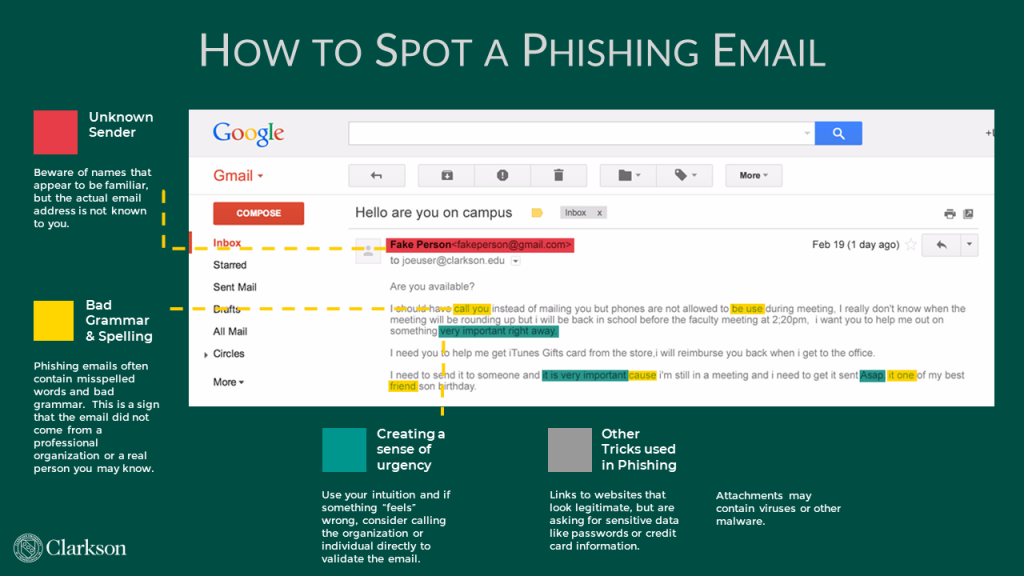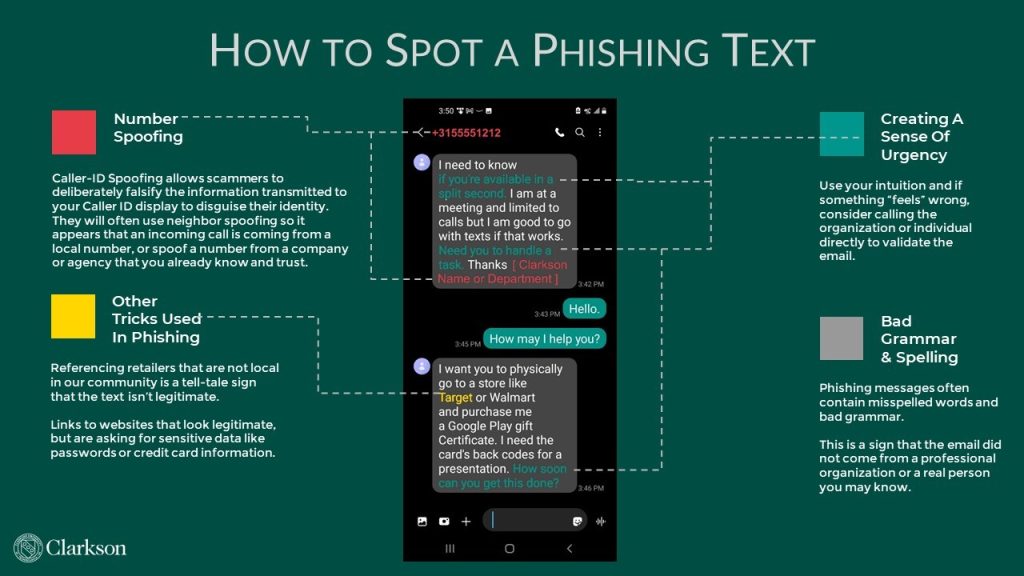The Office of Information Technology has been alerted to a recent increase in suspicious message activity, including reports of people receiving fraudulent emails or texts coming from what appears to be a familiar Clarkson name or department.

These types of messages are known as “phishing” which is the practice of sending messages that appear to be coming from a reputable source, such as a co-worker, employer, online retailer, and bank as an attempt to get you to reveal personal or sensitive information, such as passwords and credit card numbers. In some cases, they may attempt to get you to send money in some form including purchasing gift cards (iTunes, Walmart, etc.), money orders, or Western Union wired funds.

Remember from your cybersecurity training … STOP. THINK. CONNECT.
- Did the message come from an unfamiliar email address or mobile number?
- Did the message ask you to send money, purchase gift cards, money orders or wire funds?
- Did the sender promote a sense of urgency to get you to act?
- If the email contained links, did you click on them?
- If you did click on a link, did you enter any sensitive information such as a password, social security number, or credit card information?
- If the email contained attachments, did you open them?
If you answered yes to any of the questions above, information may be at risk. For assistance, please contact the IT HelpDesk at helpdesk@clarkson.edu or 315-268-HELP.
We have additional information about phishing in the OIT knowledge base.